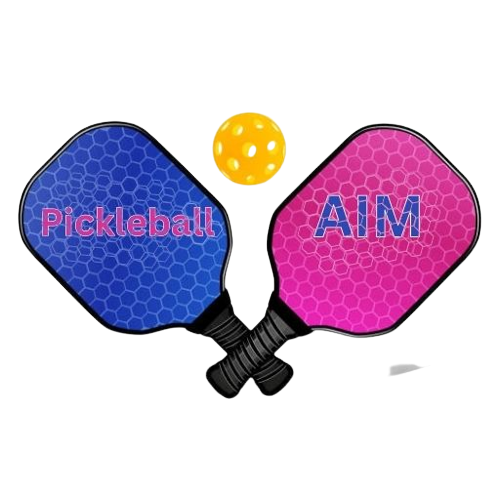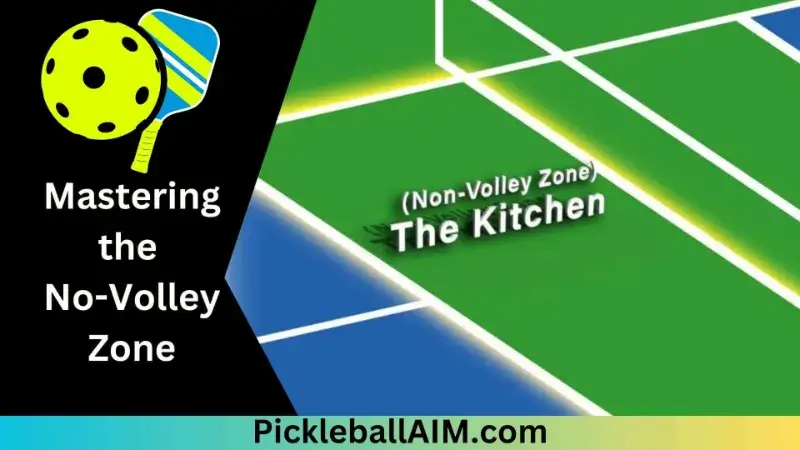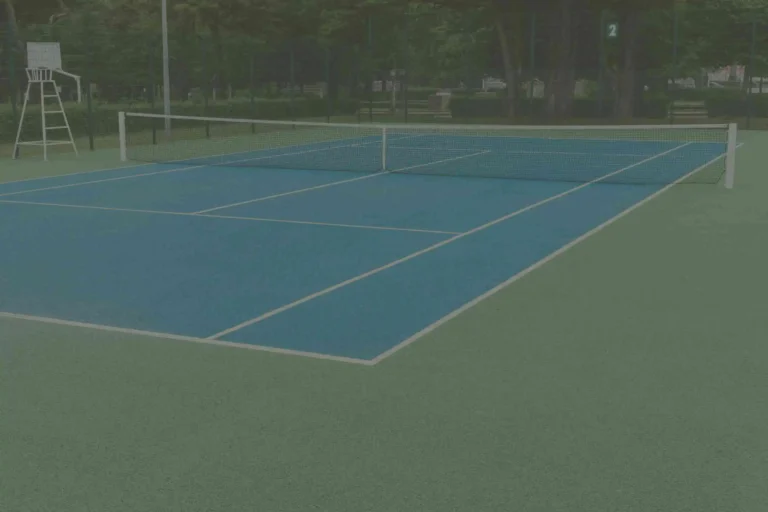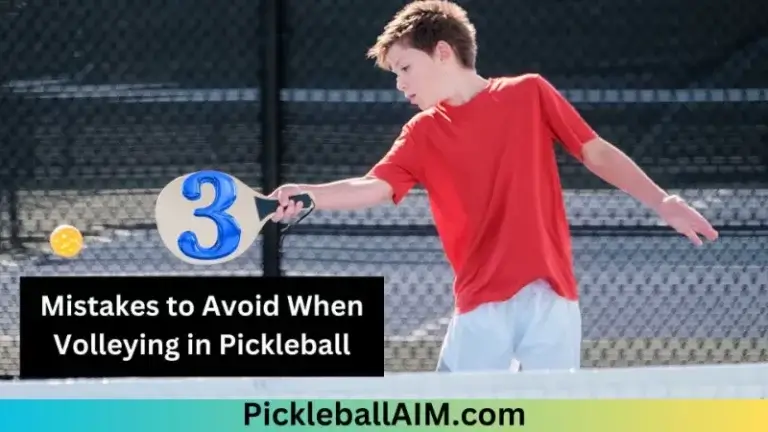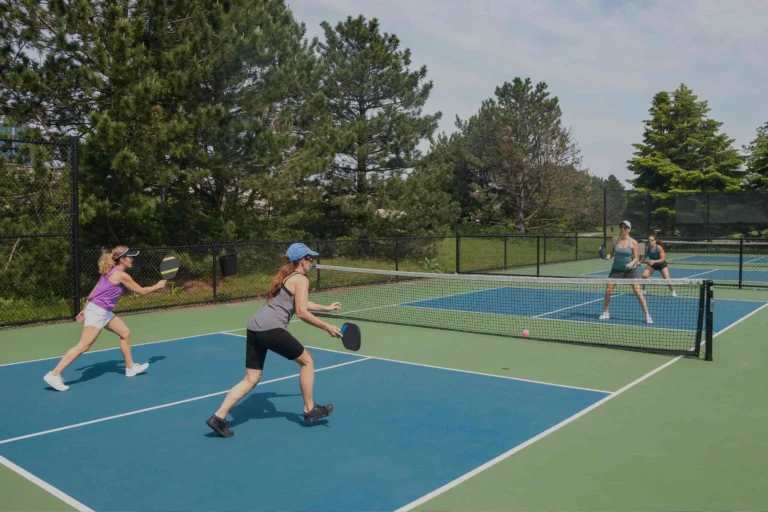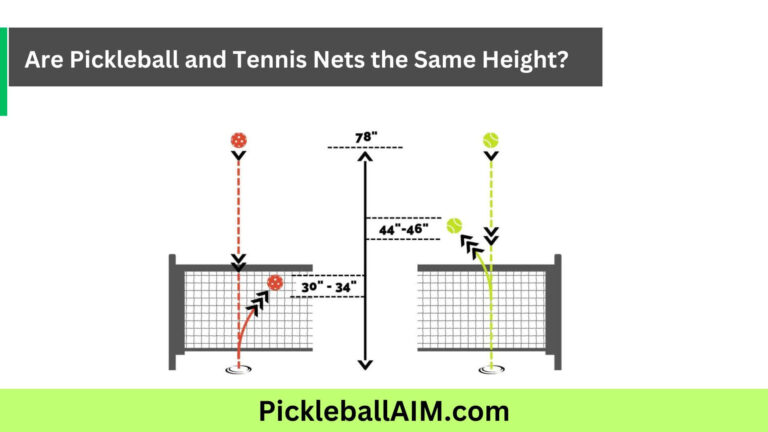Mastering the No-Volley Zone: Your Definitive Guide to Navigating the Pickleball Kitchen
Pickleball, with its unique blend of strategy and athleticism, has captivated players around the world. Central to the game is the “kitchen,” also known as the “no-volley zone.” This small but crucial area near the net requires a nuanced understanding to play skillfully. In this comprehensive guide, we delve into the intricacies of the no-volley zone, equipping you with the knowledge needed to elevate your pickleball game to new heights.
Understanding the No-Volley Zone
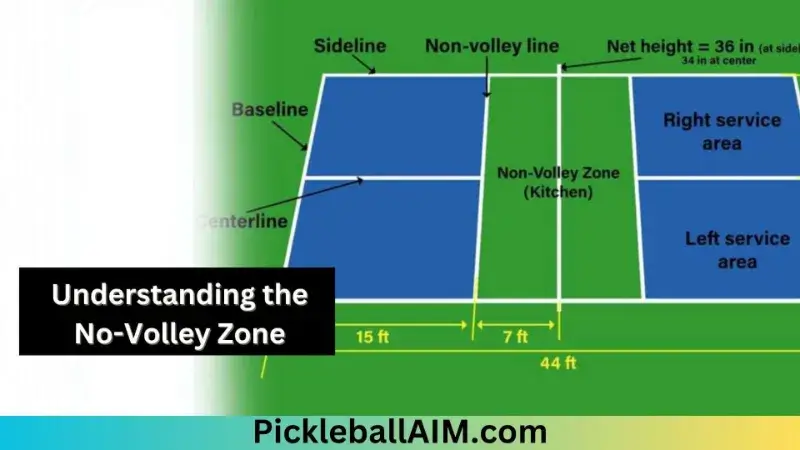
The no-volley zone, often referred to as the “kitchen,” is a rectangular area spanning 7 feet on each side of the net. The boundaries of the kitchen are marked by painted lines on the court. The purpose of this zone is to prevent players from executing volleys (hitting the ball out of the air without letting it bounce) within this area, which encourages strategic and controlled gameplay near the net.
Rules of Engagement
- No Volley Zone Rule: Players are prohibited from volleying the ball while standing within the kitchen. The ball must bounce before hitting it if you are positioned in this area.
- Foot Faults: It’s crucial to maintain proper foot placement to avoid foot faults. If any part of your foot touches the kitchen line during your shot, it’s considered a fault, and the point is awarded to the opposing team.
- Follow-Through: Even if you make contact with the ball outside the kitchen, your momentum might carry you into the no-volley zone. It’s important to ensure that your follow-through doesn’t breach this area after hitting the ball.
Strategies for Success
- Dinking: The no-volley zone often becomes the battleground for dinking, a controlled and delicate shot that keeps the ball low and near the net. Mastering dinking allows you to outmaneuver opponents and gain the upper hand in rallies.
- Third-Shot Drop: In the early stages of the game, you’ll often find yourself at the baseline while your opponents are at the net. To level the playing field, employ the third-shot drop. This shot lands softly in the kitchen, making it difficult for opponents to attack aggressively.
- Lobbing: When your opponents are positioned at the kitchen, a well-executed lob can catch them off guard. This shot, aimed over their heads, gives you time to reposition and regain control of the point.
Mastering Movement and Positioning
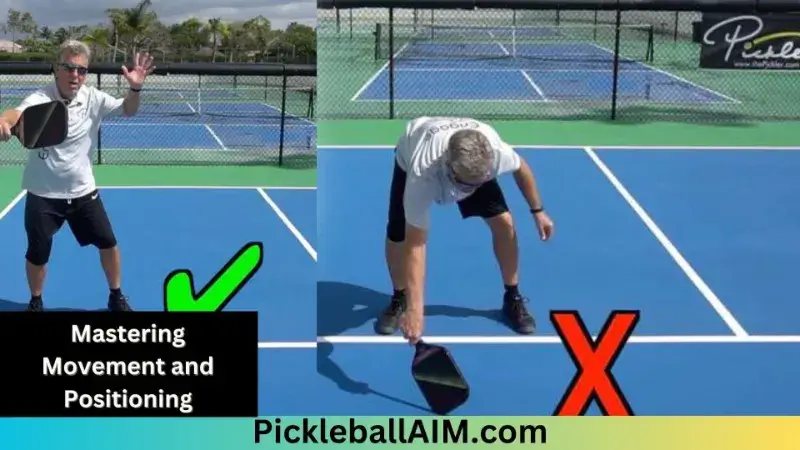
- Stay Balanced: Being near the net requires balance. Maintain a slight crouch with your weight on the balls of your feet, ready to react to shots.
- Paddle Position: Keep your paddle up and in front of you to be prepared for quick volleys, blocks, and dinks.
- Footwork: Efficient footwork is essential in the kitchen. Small, controlled steps allow you to maintain your balance and quickly react to shots.
Mindset Matters
Approach the kitchen with confidence but remain patient. Avoid getting caught up in a volley battle and focus on controlled shots that set up advantageous situations.
Practice Makes Perfect
Dedicating time to practicing within the no-volley zone is crucial for improvement. Work on your dinking, third-shot drops, and positioning to refine your skills.
Putting Knowledge into Play
As you venture into the world of pickleball, armed with a deeper understanding of the no-volley zone, it’s time to put your knowledge into action. Here are some additional tips and insights to help you make the most of your no-volley zone skills:
Communication and Collaboration
The no-volley zone is often a battleground for dueling teams. Effective communication and collaboration with your partner are crucial. Coordinate your movements, share responsibilities, and anticipate each other’s actions to maintain control over the kitchen.
Mind the Gaps
Identify the gaps in your opponents’ positioning. Aim your shots to exploit these openings, forcing them to move and potentially creating opportunities for you to take control of the net.
Pace and Placement
Vary the pace and placement of your shots to keep your opponents on their toes. Mix up soft dinks with quicker shots to keep them guessing and prevent them from settling into a rhythm.
Predict and React
Observe your opponents’ tendencies. Do they favor their forehand or backhand? Are they more aggressive or defensive? Use this information to predict their shots and react accordingly.
Stay Adaptable
Pickleball is a dynamic game, and each point brings new challenges. Stay adaptable and be ready to adjust your strategy based on the flow of the game, the strengths and weaknesses of your opponents, and your partner’s playing style.
Learn from Experience
Experience is a powerful teacher. As you spend more time in the no-volley zone, you’ll develop a keen sense of timing, positioning, and shot selection. Embrace each match as an opportunity to learn and grow, regardless of the outcome.
Sportsmanship and Fun
While mastering the no-volley zone is a goal, remember that sportsmanship and fun are equally important. Enjoy the game, celebrate great shots from both sides of the net, and relish the camaraderie that pickleball fosters.
Elevate Your Game, One Shot at a Time
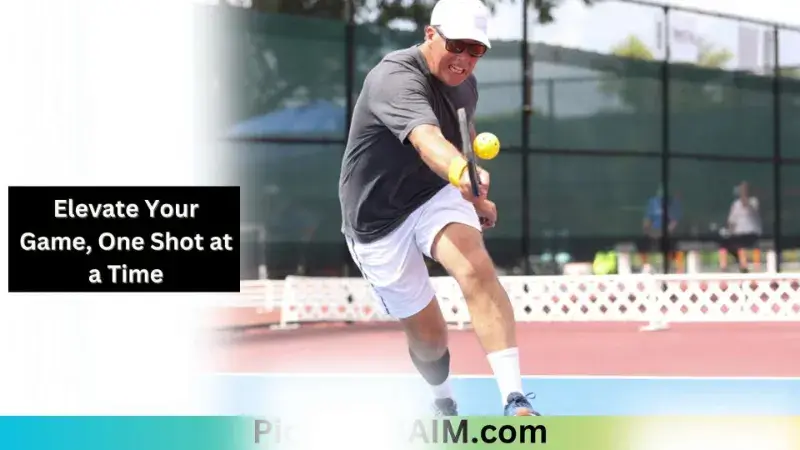
The no-volley zone, often referred to as the kitchen, is a playground of strategy and skill. Navigating this area requires finesse, precision, and a willingness to adapt. As you delve into the world of pickleball and hone your no-volley zone expertise, remember that mastery is a journey, not a destination. Each shot you execute, each dink you place, and each point you win contribute to your growth as a player.
So step onto the court with confidence, paddle in hand, and a newfound appreciation for the intricacies of the no-volley zone. Embrace the challenge, celebrate the victories, and relish the opportunity to engage in a game that not only tests your physical prowess but also ignites your strategic mind. The court is set, the lines are drawn, and the no-volley zone awaits your presence—get ready to make every move a calculated triumph in the exhilarating world of pickleball.
Beyond the Court: The Life Lessons of the No-Volley Zone
While the no-volley zone is an essential aspect of pickleball, its significance transcends the confines of the court. The strategies and principles you employ within this area can be applied to various aspects of life. Here’s how the lessons learned from the no-volley zone can resonate beyond the game:
Patience and Timing
Just as waiting for the right moment to strike is crucial in the no-volley zone, patience and timing are essential in life. Often, the most significant opportunities arise when you’re willing to wait for the perfect moment to take action, ensuring that your efforts are well-placed and impactful.
Precision and Control
In the no-volley zone, precise shots and controlled movements can make all the difference. Likewise, approaching tasks with precision and maintaining control over your actions can lead to more effective and successful outcomes in your personal and professional endeavors.
Adaptability and Flexibility
As the game evolves, so do the dynamics of the no-volley zone. The ability to adapt to changing circumstances is equally important in life. Being open to new ideas, adjusting your plans, and navigating unexpected challenges with grace can lead to resilience and growth.
Collaboration and Communication
In pickleball, effective communication and collaboration with your partner are vital for success. The same applies to teamwork in various contexts. Listening, sharing ideas, and working harmoniously with others can lead to innovation and achievement in collaborative endeavors.
Strategic Thinking
The no-volley zone demands strategic thinking and the ability to anticipate your opponents’ moves. In life, strategic thinking helps you make informed decisions, set achievable goals, and navigate challenges with a clear plan in mind.
Embracing Mistakes
Mistakes are an inevitable part of both pickleball and life. Learning from your errors in the no-volley zone can help you grow as a player. Similarly, embracing your mistakes in life, and viewing them as opportunities for growth rather than setbacks, can lead to personal development and resilience.
A Mindset for Success, On and Off the Court
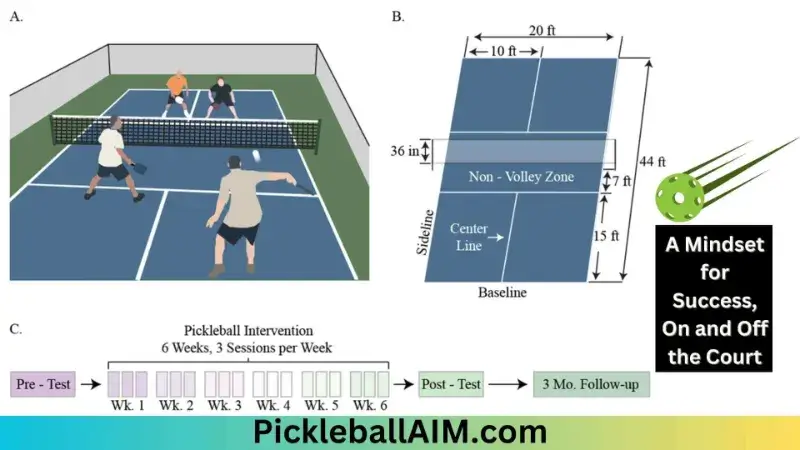
The no-volley zone isn’t just a physical space—it’s a metaphor for the challenges and opportunities life presents. As you develop your skills within this area of the pickleball court, you’re also nurturing a mindset that can contribute to your success in various aspects of your life journey.
So, whether you’re strategizing a critical move in a game or navigating a significant decision in life, remember the lessons you’ve learned from the no-volley zone. Embrace patience, precision, adaptability, collaboration, and strategic thinking. By applying these principles, you’ll not only excel in pickleball but also thrive in the broader arena of life, making every move a calculated and meaningful step toward success and fulfillment.
Conclusion
The no-volley zone, or kitchen, is a cornerstone of pickleball strategy. Navigating this area with finesse requires a blend of skill, precision, and thoughtful execution. By mastering the rules, understanding effective strategies, and honing your movement, you’ll transform the kitchen from a challenge into a zone of opportunity. Embrace the nuances of this vital aspect of the game, and watch as your pickleball prowess soars to new heights, making every point a masterstroke of strategy and finesse.
